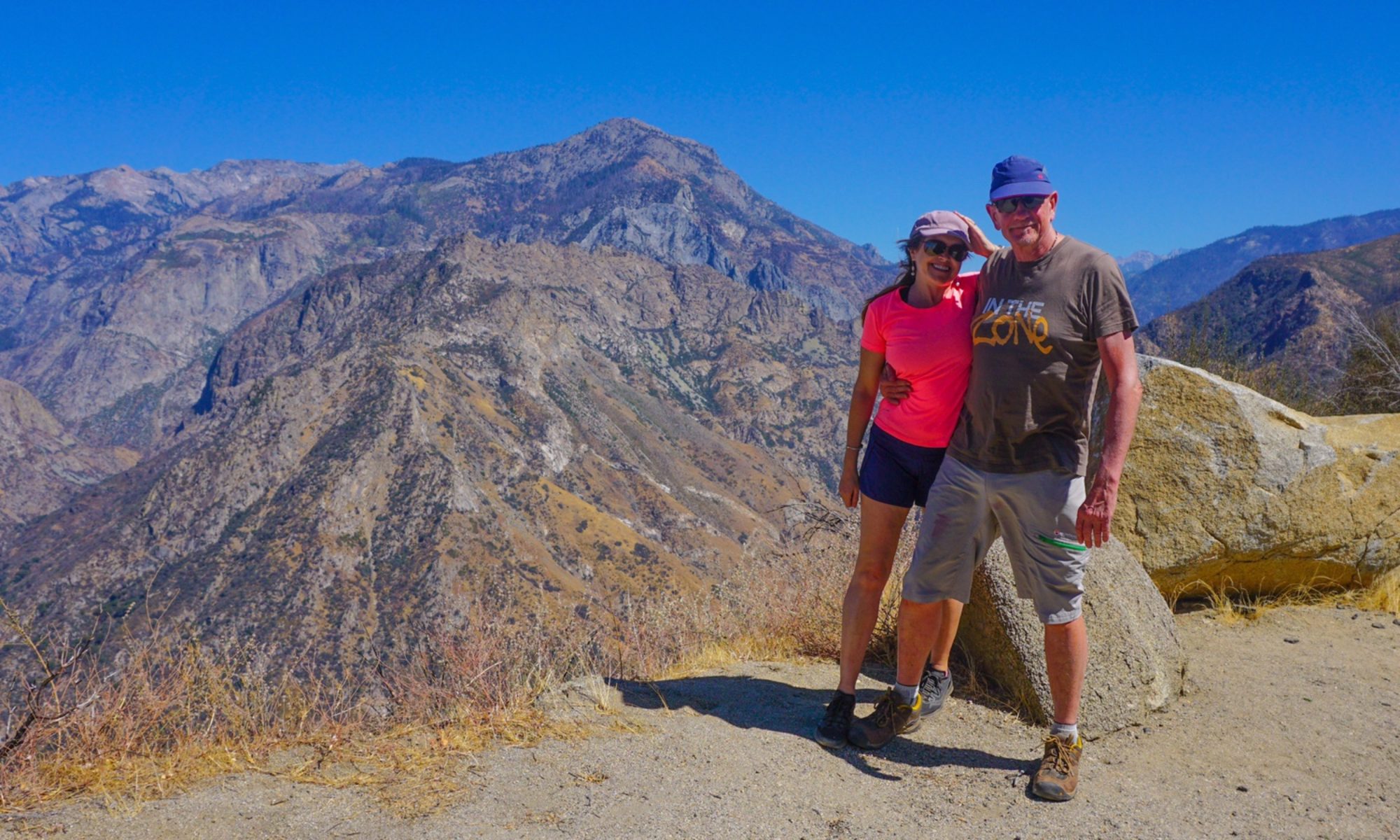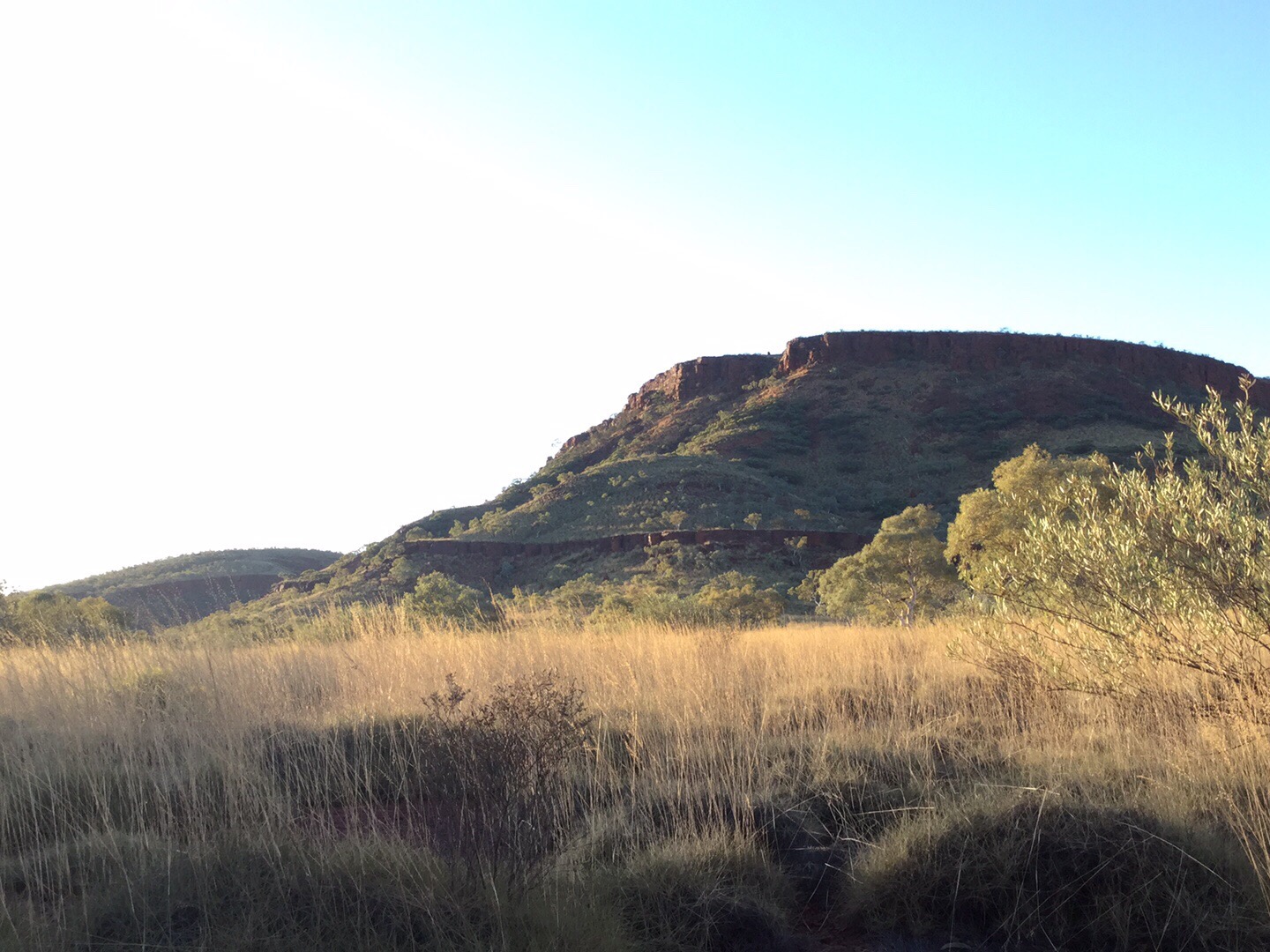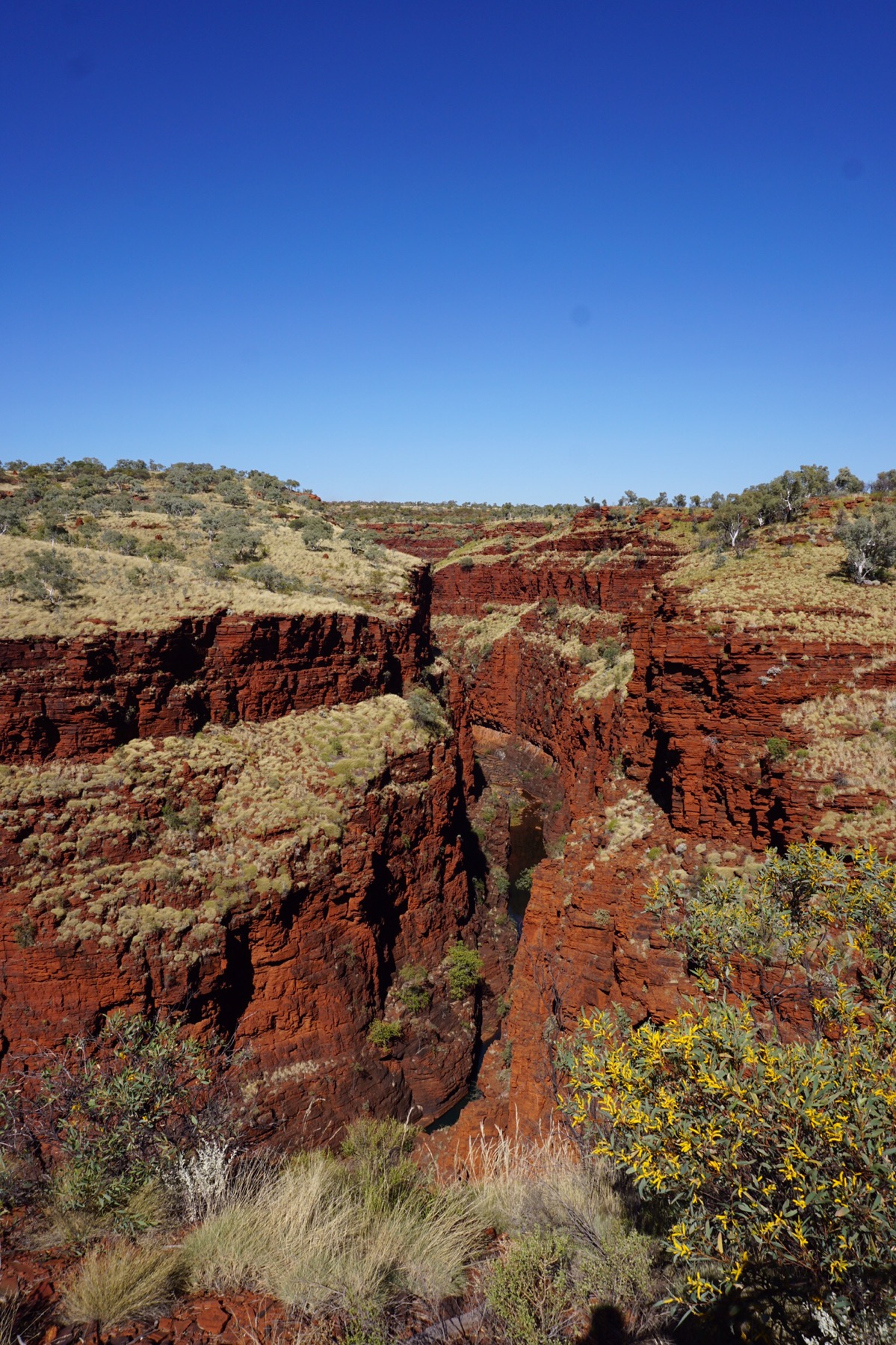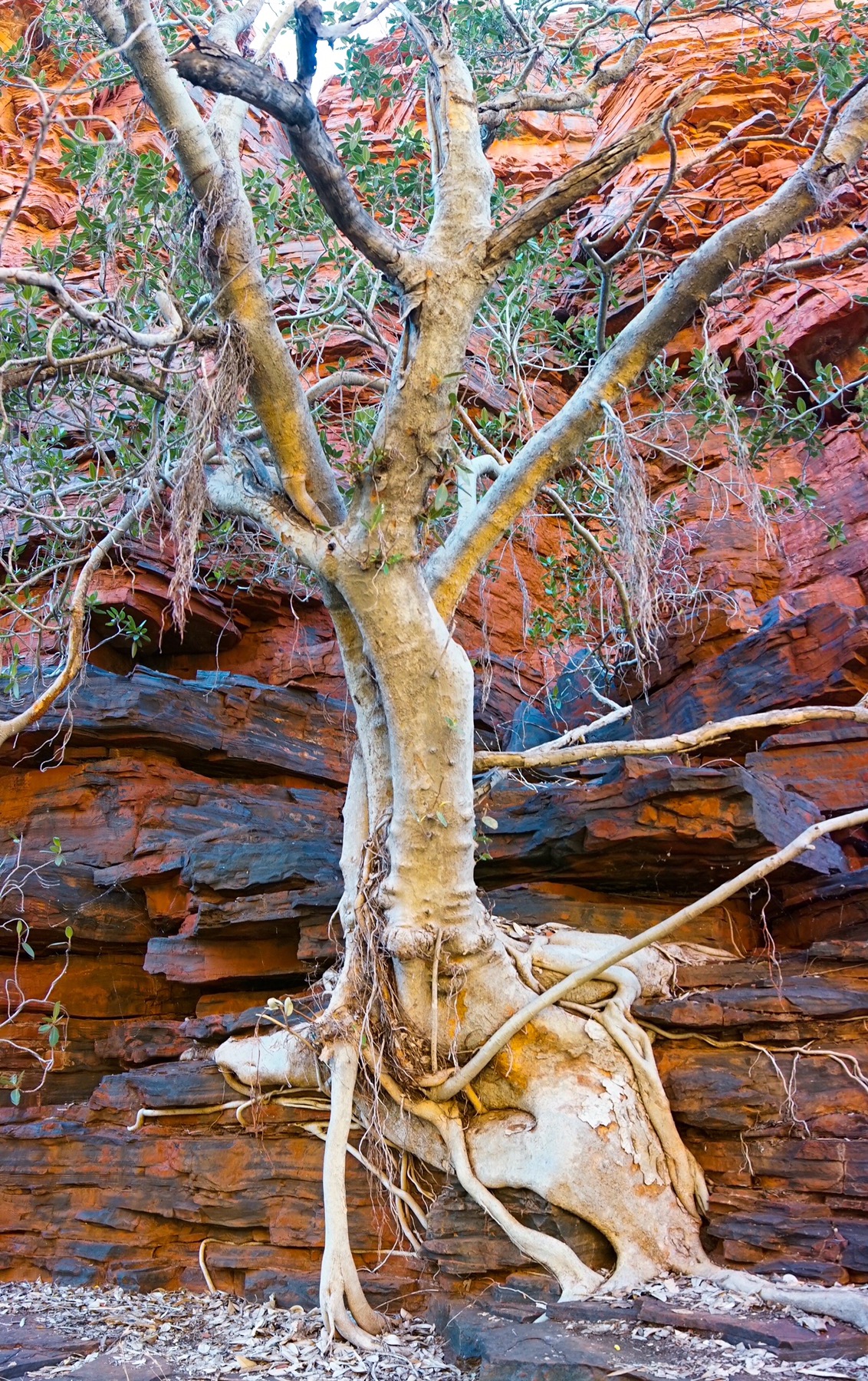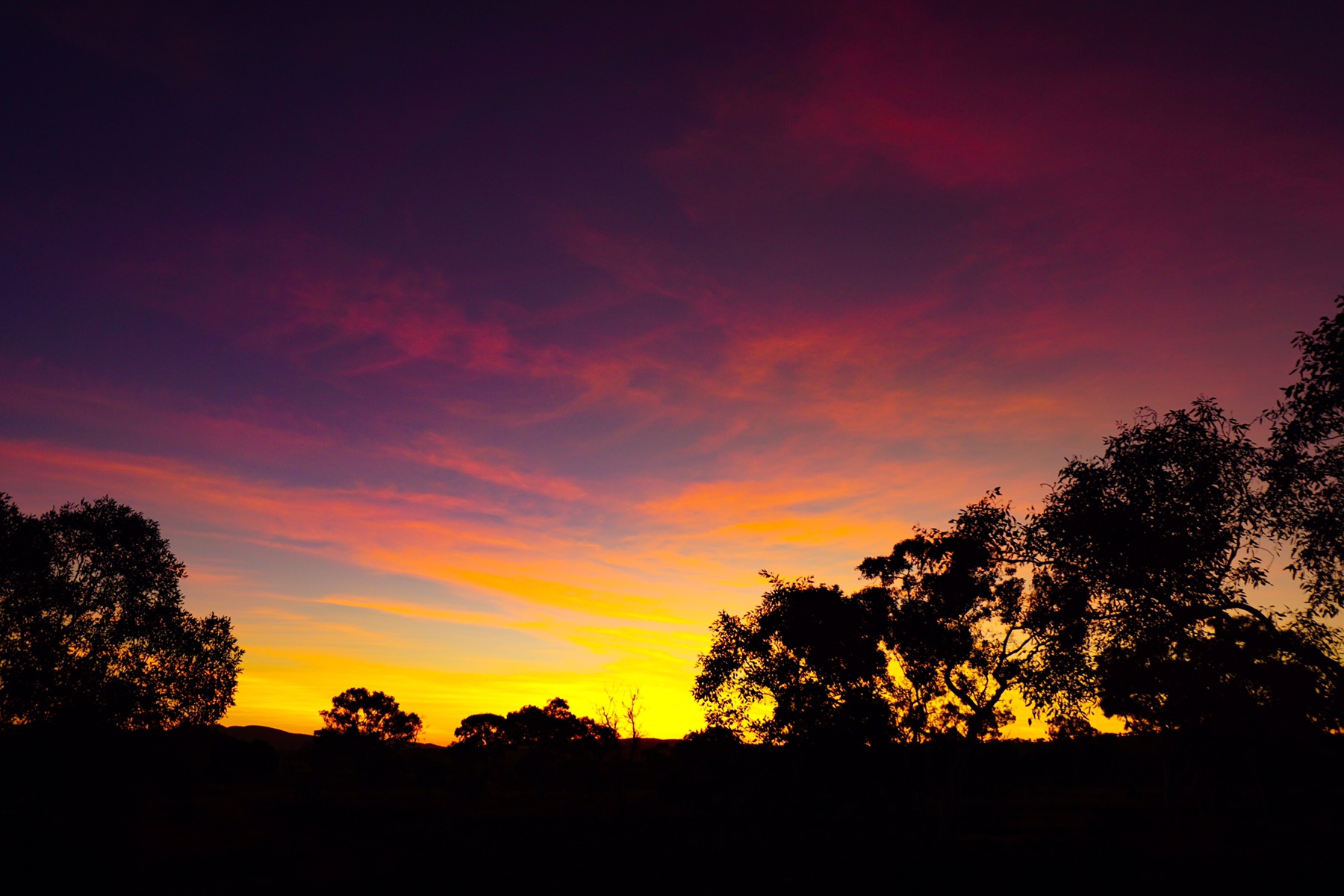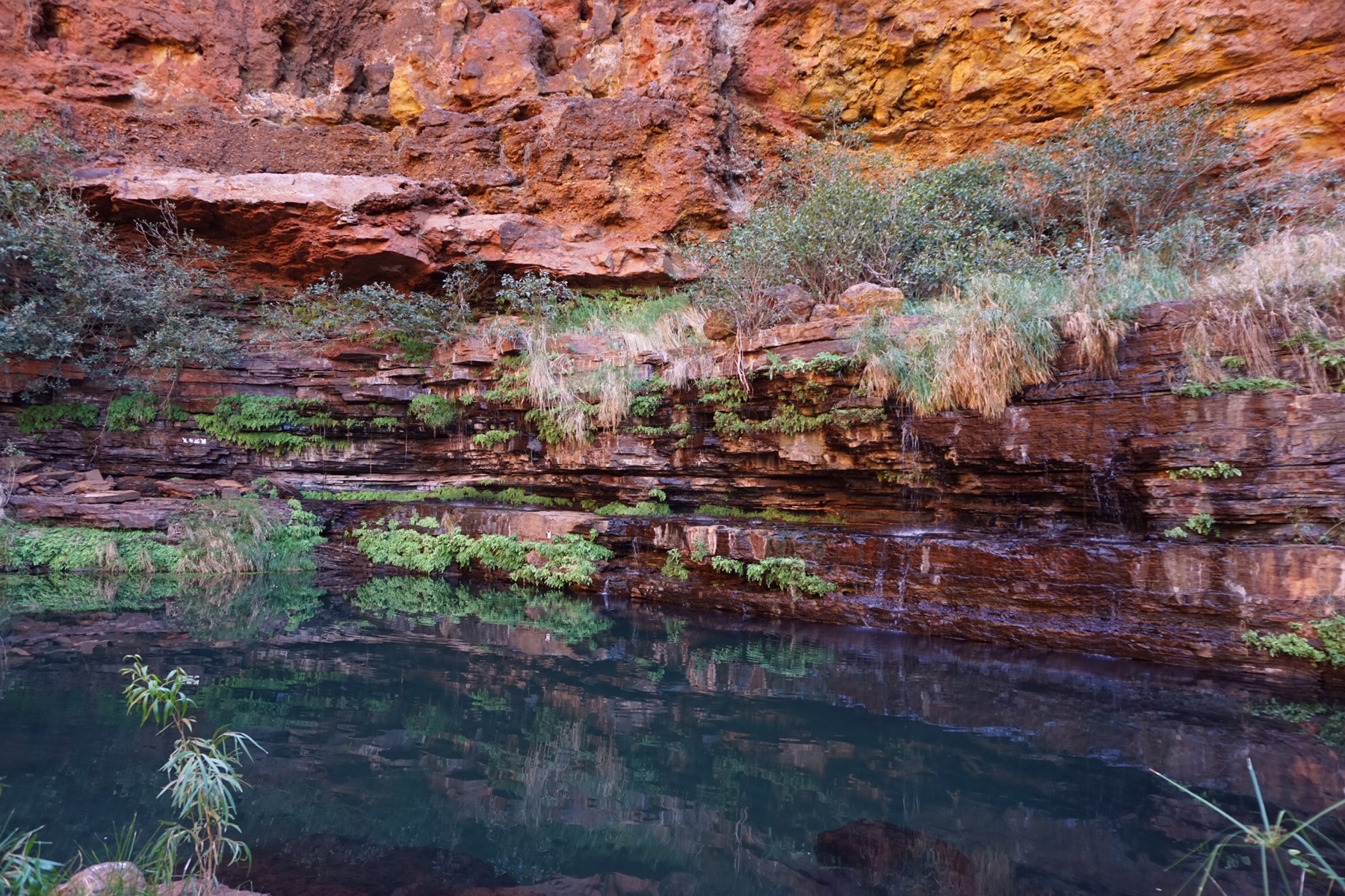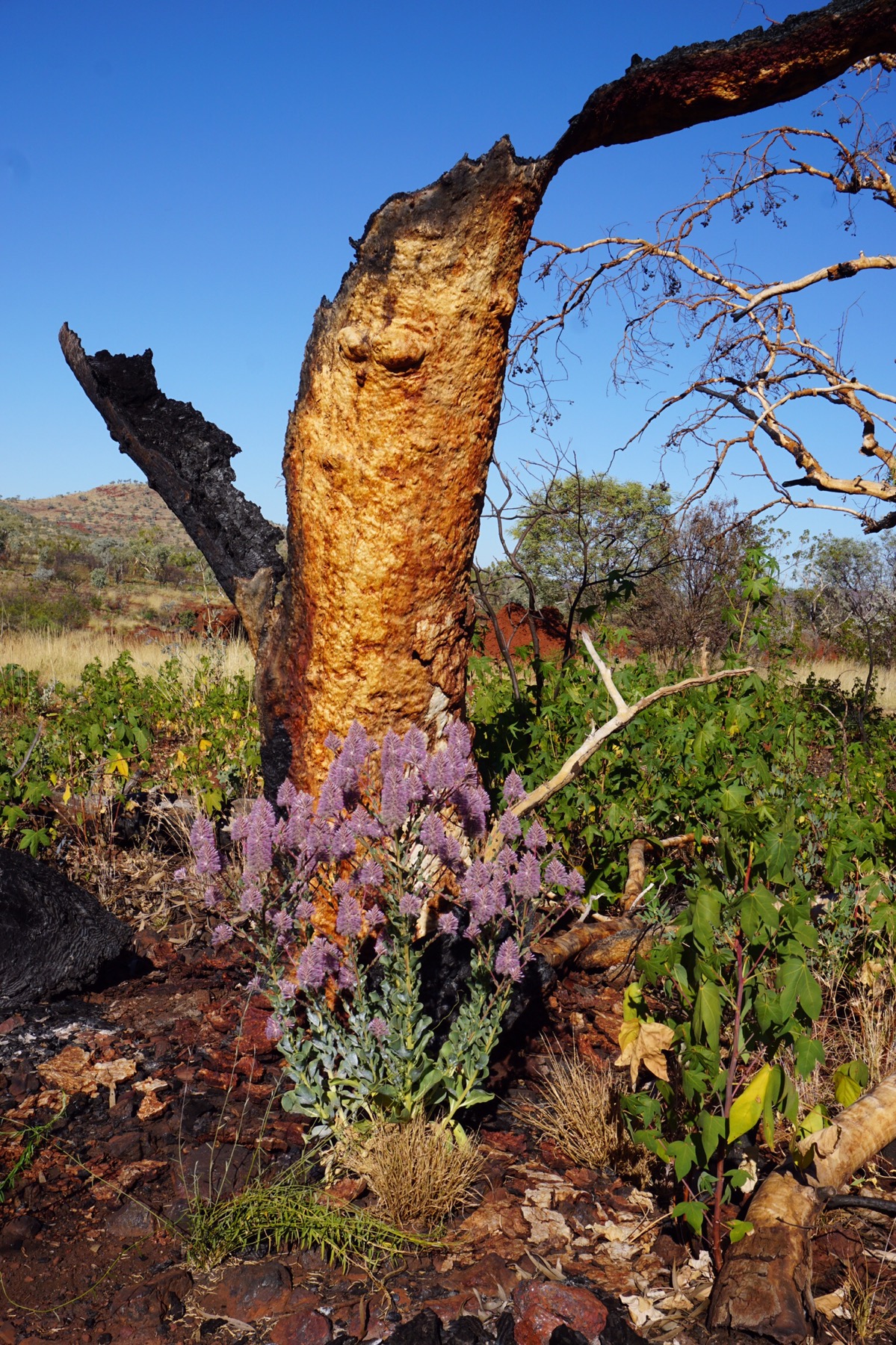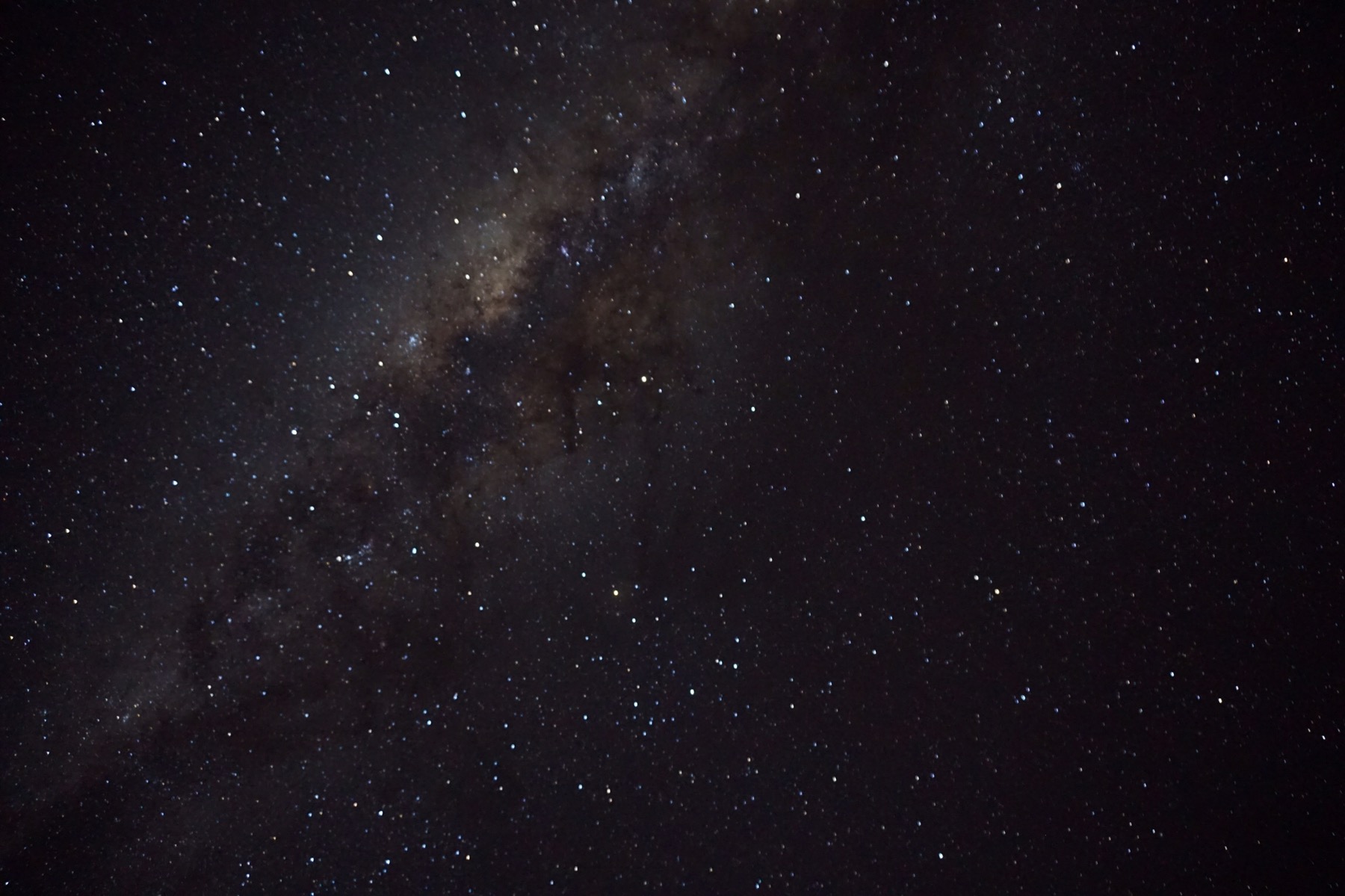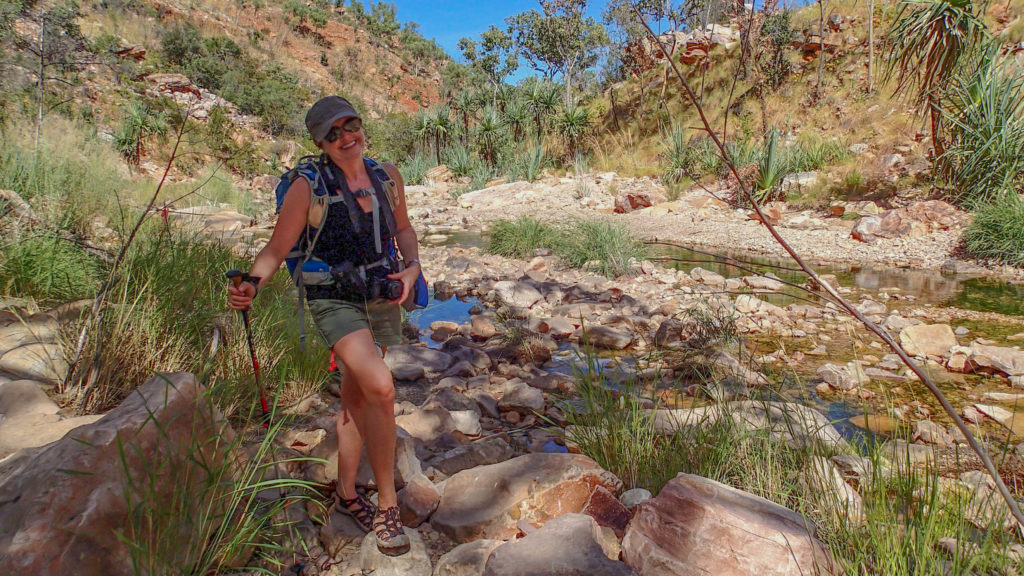Author: Mrs A
Distance driven: 83 km
Distance hiked: 2.2 km (Yes, mostly in the car!)
Flights climbed: 10 floors
After praising the Savannah Campground for its peace and quiet we were disappointed last night when a group of camper trailer toting friends turned up late and set up right opposite where we were camping. They then cracked open the beers and yelled across to each other until long after midnight, despite Mr A politely asking them to quiet down (he was told to ‘f-off’) and apparently the retreat manager told them on two occasions also. So this morning, we packed up and departed, forfeiting tonight’s booking (‘no refunds’).
We headed first for the nearby town of Tom Price, where we hoped to gain a permit to take the shorter mining road to Millstream-Chichester National Park. Unfortunately the information centre told us it was in terrible condition as there was a new mine opening along it, and that caravans were not allowed. We had no choice but to add 200 km to our journey and go via the ‘highway’ (a rough, corrugated gravel road!). We stocked up on fruit and vegetables while in town and headed off.
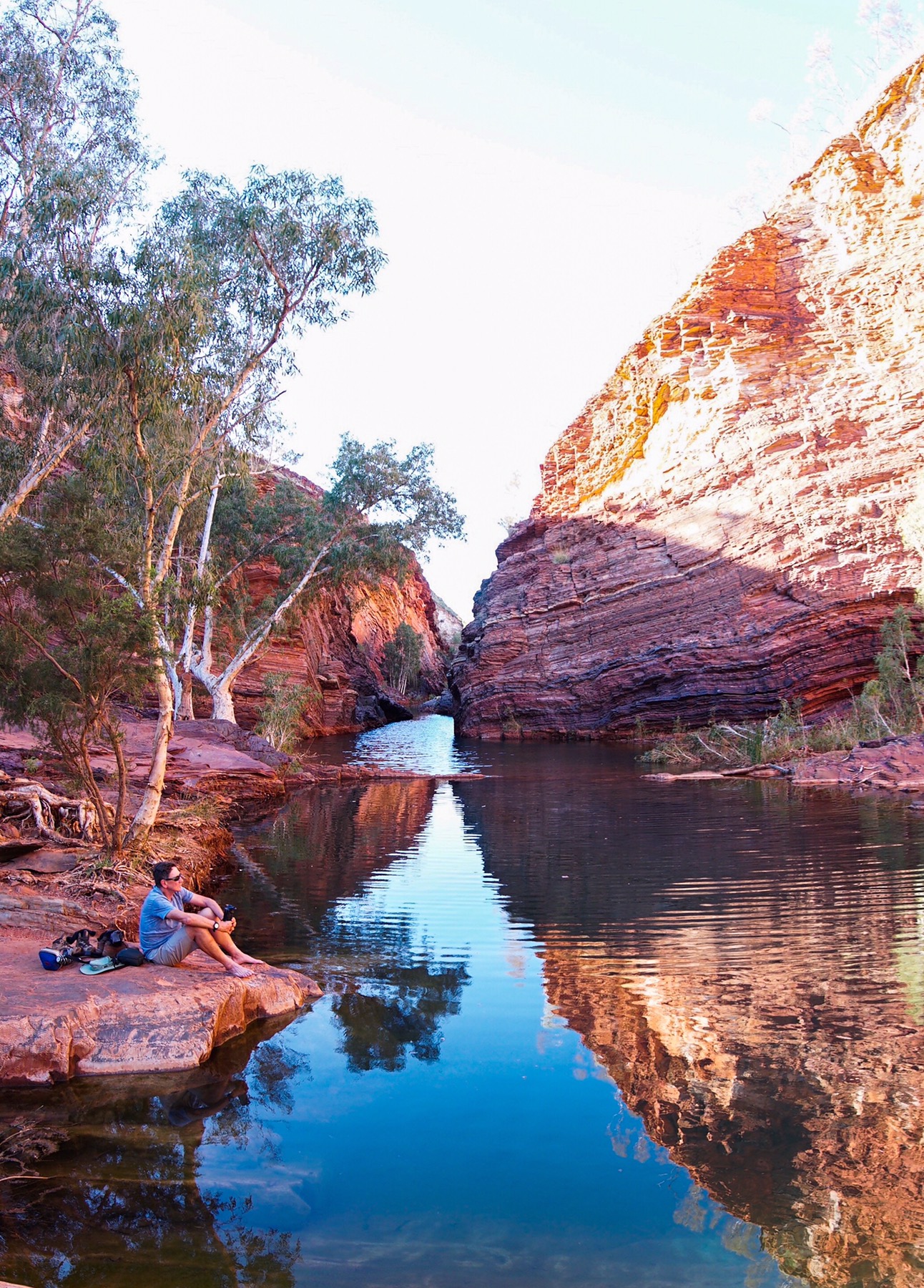
As tends to be the case, our change in direction and plans was not bad. We passed the outer southern side of Karijini National Park and a final gorge which is visited by few. This made it our favourite location as we pulled in for lunch, and then hiked down into the gorge. What a fabulous spot. Absolutely stunning reflections and rippling sediments in the walls which any landscape designer would be jealous of. We sat for a while with our feet in the water, enjoying the serenity and watching the fish swimming beneath us, cautiously eyeing my blood-orange coloured toenails.

We decided against driving any further, and pulled into a bush camp nearby. It is by far one of the most stunning locations we have camped. Yes, of course there are other campers here (‘You’re never alone in WA’), but they are at least 200 metres away from us in any direction. We are surrounded by stunning hills of the Hamersley Range all around us and the chirps of Rainbow Bee-eaters, Firetails and Zebra Finches. I think we are going to be happy here tonight!
